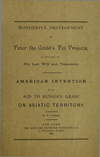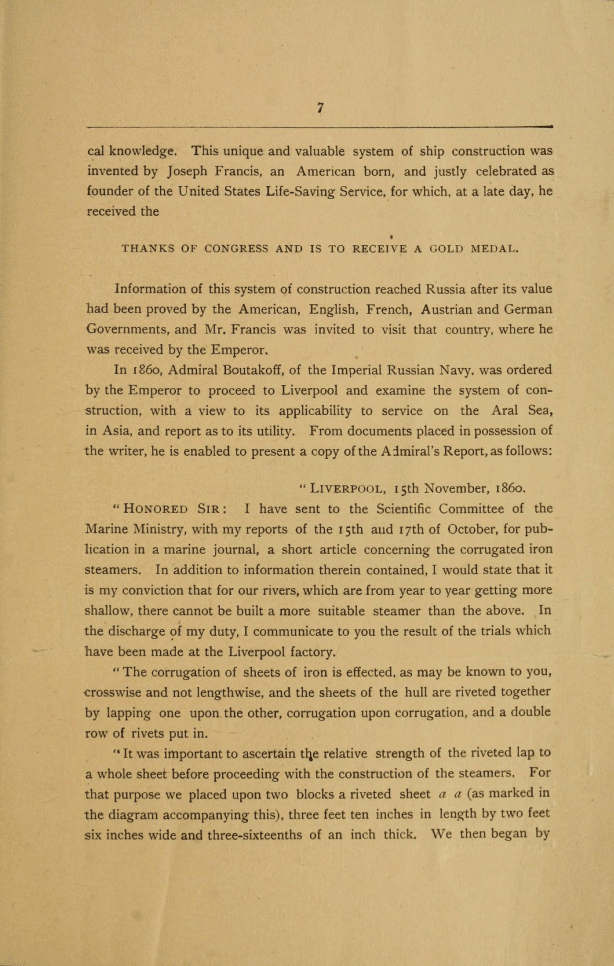
Page 7: of Maritime Reporter Magazine (January 1889)
Read this page in Pdf, Flash or Html5 edition of January 1889 Maritime Reporter Magazine
7 cal knowledge. This unique and valuable system of ship construction was invented by Joseph Francis, an American born, and justly celebrated as founder of the United States Life-Saving Service, for which, at a late day, he received the «
THANKS OF CONGRESS AND IS TO RECEIVE A GOLD MEDAL.
Information of this system of construction reached Russia after its value had been proved by the American, English, French, Austrian and German
Governments, and Mr. Francis was invited to visit that country, where he was received by the Emperor.
In i860, Admiral Boutakoff, of the Imperial Russian Navy, was ordered by the Emperor to proceed to Liverpool and examine the system of con- struction, with a view to its applicability to service on the Aral Sea, in Asia, and report as to its utility. From documents placed in possession of the writer, he is enabled to present a copy of the Admiral's Report, as follows: " LIVERPOOL, 15th November, i860. " HONORED SIR : I have sent to the Scientific Committee of the
Marine Ministry, with my reports of the 15th and 17th of October, for pub- lication in a marine journal, a short article concerning the corrugated iron steamers. In addition to information therein contained, I would state that it is my conviction that for our rivers, which are from year to year getting more shallow, there cannot be built a more suitable steamer than the above. In the discharge of my duty, I communicate to you the result of the trials which have been made at the Liverpool factory. " The corrugation of sheets of iron is effected, as may be known to you, •crosswise and not lengthwise, and the sheets of the hull are riveted together by lapping one upon the other, corrugation upon corrugation, and a double row of rivets put in. " It was important to ascertain tlje relative strength of the riveted lap to a whole sheet before proceeding with the construction of the steamers. For that purpose we placed upon two blocks a riveted sheet a a (as marked in the diagram accompanying this), three feet ten inches in length by two feet six inches wide and three-sixteenths of an inch thick. We then began by

 6
6

 8
8
